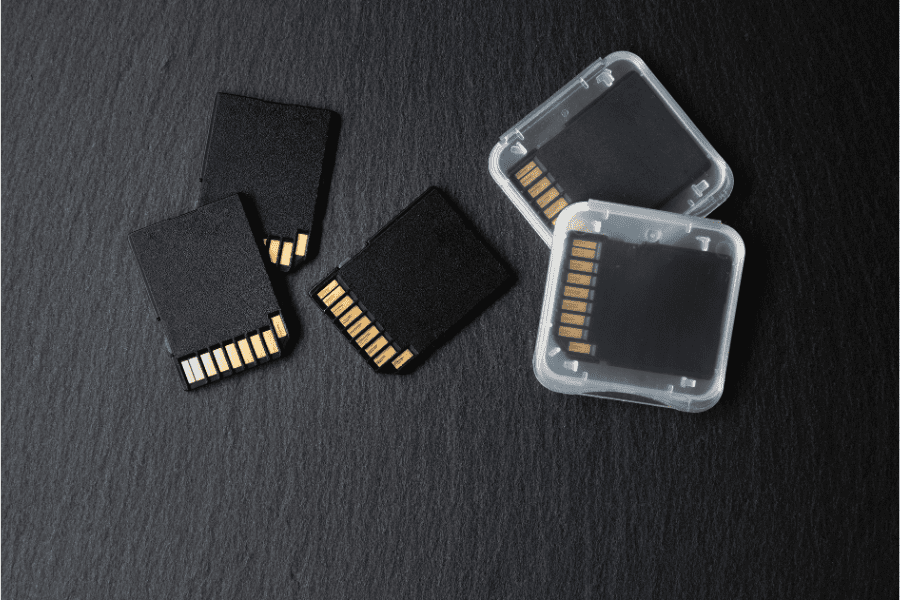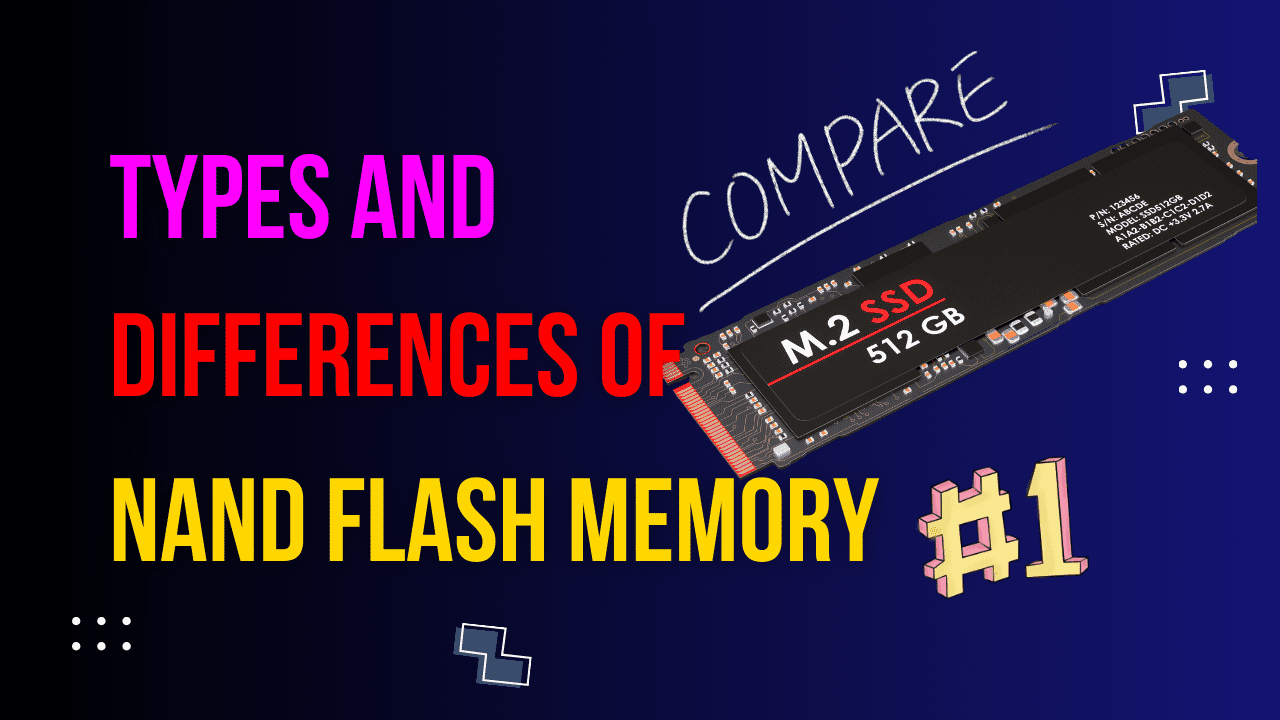Table of Contents
A Brief Look at NAND Flash Memory

NAND flash memory is one of the most important technologies in digital storage. It has changed the way we store and access data in a big way. Solid-state drives (SSDs) in our computers and the smartphones we carry around with us are both examples of NAND flash memory. SSDs offer fast, reliable, and non-volatile storage options. This part will give you a broad look at NAND flash technology and what it means for current gadgets.
A Look at NAND Flash Technology
The technology behind NAND flash memory is called “non-volatile.” Hard disk drives (HDDs) normally store data on magnetic surfaces, but NAND flash saves data in memory cells. Since there are no moving parts, access times are faster and the drives last longer. The word “NAND” comes from the NAND gate, which is a basic building block of digital circuits. It describes how these memory cells are set up and how they work electrically.
NAND flash memory is an important part of many electronic products because it can store data without power, read and write data quickly, and take up little space. For these reasons, it’s a great way for a lot of different tech gadgets to store data.
How important it is in modern electronics
NAND flash memory has made it possible for many new electrical products to be made that are smaller, faster, and more reliable than ever. Its effects can be seen in many areas, including:
- Computing: SSDs, which are driven by NAND flash, are much more reliable than standard HDDs and can boot up and transfer files much faster. This makes computers and servers run faster.
- Industrial Uses: Because NAND flash is reliable and long-lasting, it can be used in harsh industrial settings where data security and gadget longevity are important.
- It’s impossible to say enough about how important NAND flash memory is to current gadgets. Personal devices have become smaller and faster thanks to it. It has also helped big data and cloud computing grow by offering efficient, high-capacity storage options.
As we learn more about NAND flash memory, its different types, and how it can be used, it becomes clear that this technology will continue to be very important to the progress of digital files and electronics.
Understanding the Basics of NAND Flash Memory

Before looking into the different kinds of NAND flash memory and how they can be used, it’s important to understand the basic ideas behind this technology. This part gives a clear explanation of what NAND flash memory is and how it works to store and get data.
What does NAND Flash Memory mean?
This is a type of non-volatile recording technology that keeps data even when the power goes out. A group of memory cells made from floating-gate transistors are used to put it together. NAND flash doesn’t lose its data when the power goes out like unreliable memory (like RAM does). This makes it perfect for keeping the operating system, apps, and user data in a wide range of electronic devices.
How NAND flash memory works in short
NAND flash memory saves information by catching electrons in the floating gates of its transistors. This process doesn’t need power all the time. Different types of memory (SLC, MLC, TLC, etc.) can store one or more bits of data in each cell.
- To write data, NAND flash uses a method called “programming,” in which electrons are added to the floating gate. The bits of data that are saved are shown by whether these electrons are present or absent.
- Reading Data: The memory processor checks the charge of each cell to see if it shows a 0 or a 1 (or more in the case of MLC and TLC) when reading data.
- Getting rid of data: Normal recording devices can write new data over old data, but NAND flash needs to erase old data before it can write new data. To do this, electrons are taken away from the floating gates, which returns the cells to their original state.
- NAND flash memory’s design lets it store a lot of data in a small space. This makes it cheaper and more compact than other types of data storage. This design does come with some problems, though. For example, the memory cells wear out during the erase and program cycles, so there are only so many write cycles that can be used.
Error correction codes (ECC) and wear-leveling methods are used to make NAND flash memory work. ECC helps fix mistakes that happen over time and with use, which protects the security of the data. Wear-leveling techniques spread writes and erases of data evenly across the memory cells to make the device last longer.
Knowing these basics will help you understand the differences between NAND flash technologies and how they can be used in different situations. The fact that NAND flash can keep a lot of data in a small space, along with its longevity and speed, makes it an important part of today’s digital world.
Types of NAND Flash Memory

NAND flash memory is not a one-size-fits-all technology. It has evolved into several variants, each with its unique characteristics, advantages, and disadvantages. The three primary types of NAND flash memory—Single-Level Cell (SLC), Multi-Level Cell (MLC), and Triple-Level Cell (TLC)—differ in how many bits of data each cell can store. This section explores these differences and what they mean for users.
Single-Level Cell (SLC)
Most NAND flash memory is made up of SLC flash memory, which only saves one bit of data per cell. This ease of use has several important benefits:
High Performance: Because it stores data in a simple way, SLC NAND has the fastest read and write speeds of the three types.
High Durability: It can handle a lot more write/erase cycles, often up to 100,000 cycles, which makes it very stable over time.
Consistency: Even when it’s working hard, SLC keeps its performance levels steady, which is very important for business and industry uses.
But these good things don’t come for free. Because it has less data density, SLC NAND costs the most per gigabyte (GB) of storage. This means that it isn’t used as much in market goods and is better suited to high-end, mission-critical applications where speed and dependability are very important.
Multi-Level Cell (MLC)
MLC flash memory is in the middle of the NAND range. It can store twice as much data in the same amount of room as SLC NAND because each cell can hold two bits of data.
Balanced Performance and Cost: MLC is better than SLC because it strikes a balance between speed, durability, and cost. This means it can be used in more situations.
Moderate Durability: It can handle between 3,000 and 10,000 write cycles, which is less than SLC but more than enough for most consumer and business apps.
The main problem with MLC NAND is that it can’t write data as quickly or for as long as SLC can. This makes it a less good choice for places where these things are important.
Triple-Level Cell (TLC)
By holding three bits of data per cell, TLC flash memory goes even further in terms of capacity. TLC is the most cost-effective way to store a lot of data because it increases the quantity of the data.
High Storage Capacity: Because TLC can store more data in the same amount of room, it is perfect for consumer-grade storage options like SSDs for laptops, cell phones, and tablets.
Value for money: It has the lowest price per GB, which means you can store more data for less money.
When compared to SLC and MLC, TLC has slower read/write speeds and less longevity (about 500 to 3,000 write cycles). Because of these features, TLC can be used in situations where cost and large storage space are more important than the best performance or life.
In the next article, we will take a closer look at the features and pros and cons of NAND Flash Memory.
Discover More
If this article made you happy and taught you something, I’m sure our next article will do the same for you. Each piece is carefully written to help you understand things better and enjoy reading more. So, to keep exploring and having fun, just click on this link to go to our next story.
Choosing Your File System Wisely: NTFS vs FAT32 vs exFAT Compared – ReViewMaster DEN (rvmden.com)



